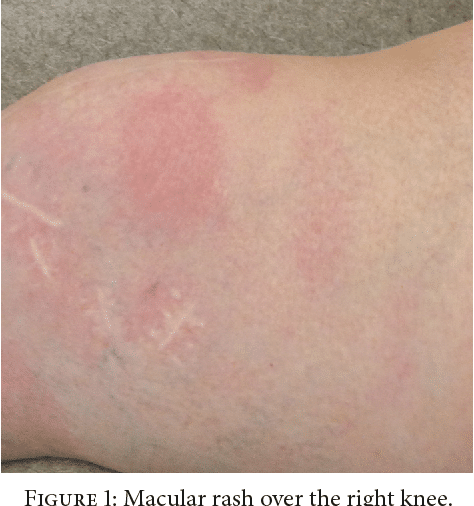Lyme Disease: What I Wish We’d Known
You may have noticed that we’ve been pretty quiet this summer, and unfortunately that’s because we’ve been dealing with Lyme disease!
My mom is the unlucky one of our group who picked it up during our vacation in Vermont last month, which we spent picking ticks off ourselves. (I grew up in Vermont and ticks/Lyme were a non-issue back then, but climate change (among other factors) means we will just be seeing more and more of it, sadly.)

It was a brutal month between when my mom started having symptoms (which came and went) until she finally was diagnosed and started treatment, and I’m happy to report that she seems to finally be on the mend.
My heart goes out to those of you with truly ill parents–emotionally, it was so hard to see her suffer and worry about what was wrong. Logistically, my work was put on hold because her illness fell during the two-week stretch that my kids were supposed to be staying with her. Meanwhile, her summer was dominated by not feeling well, and now being on treatment for 21 days, during which time she is particularly susceptible to sunburn so kind of has to hide out!
I do feel fortunate that we figured out what was going on with her, and I wanted to share a few things we learned about Lyme disease symptoms through this process:
1) Don’t discount a febrile illness that doesn’t resemble what you read online about Lyme.
My mom spiked a fever and suffered from extreme malaise a few weeks after she found a tick on her back, but she also experienced significant gastrointestinal symptoms when she first got sick (mostly, pronounced nausea). We assumed she had caught my nephew’s stomach bug, especially when her symptoms passed quickly and she felt fine for days afterwards. All the Lyme literature stresses an absence of gastrointestinal symptoms, and most people with Lyme feel bad with fevers and aches for weeks, so her presentation was atypical.
2) Don’t wait for a rash that looks like what you see online, or like what your doctor has seen before.

My mom’s rash was really different from anything that typically appears with Lyme, and it was originally diagnosed as some kind of post-viral \ or possible allergy because of its appearance. There was no reaction at all near her tick bite, and her rash came and went for two weeks without any bullseye ever appearing. The picture to the right is one I found online that looks similar to what my mom had, but still not exactly the same.
3) Pay attention to pain.
The symptom that finally prompted a Lyme test for my mom was pain in her back radiating to a leg. It seemed like simple sciatica, but chiropractic adjustments and massages brought no relief. That said, she is happy that she received a massage because that therapist identified the rash as similar to what another client with Lyme had experienced. I kept Googling “Lyme back pain” and coming up empty, but my physician mother-in-law found articles in medical literature that suggest various nerve pain can occur in 10%-15% of patients.
I thought I’d share these takeaways in case any of you have a weird case of Lyme like my mom did. Perhaps most cases of Lyme aren’t “textbook,” although the people who get a blazing bullseye rash and fever are the lucky ones who probably are diagnosed and treated quickly.
Please feel free to comment with your own Lyme experiences below.
Stay sane,


Maia, Founder & CEO

Sadly this illness has devastated the health and finances of far too many families, my own included.
You may find as spirochetes burrow into cells and tissue, where they form cysts and biofilms in order to hide from the immune system and antibiotics, that your Mom’s symptoms return after periods of feeling relatively normal. This is not unusual.
When exposed to antibiotics and even our own immune system, the spirochetes do this as a form of protection, self preservation. They re-emerge in their spirochete form when the antibiotics or herbs are stopped and often when the persons body is under stress causing repeat or new symptoms.
There is a new medication today where disulfiram/Antabuse is used and it seems to permanently “cure” lyme. This is new and the jury is still out but it’s hopeful. Often recovery seems to be multifaceted and lengthy.
It’s getting better but diagnosis is difficult and regular labs may produce far too many false negatives. A few years back the state of VA passed a law requiring clinicians to inform their patients that a negative lyme test does not mean they don’t have lyme. In addition, one’s regular family doctor may think they are lyme literate when they are in reality not at all.
Children can exhibit behavioral issues including ADHD and can even be misdiagnosed with Autism.
People can exhibit cognitive symptoms similar to dementia. They can forgot how to do simple tasks like writing their name, forgetting how to get home, have difficulty concentrating or remembering, etc.
Lyme is not just achy joints by any means. Some people never get painful joints. It can attack any body system as your Mom experienced.
And there are a host of other infections that are transmitted by the same tick that gives lyme. These can also complicate the picture.
Sadly this appears to be a controversial disease with two schools of thought about testing and treatment. This delayed my own diagnosis for decades.
The loss when lyme goes undiagnosed and mistreated affects the life of the individual and their family in profound ways. It also truly affects society as well because we lose productive, creative, intelligent, hard working citizens – both adults and children.